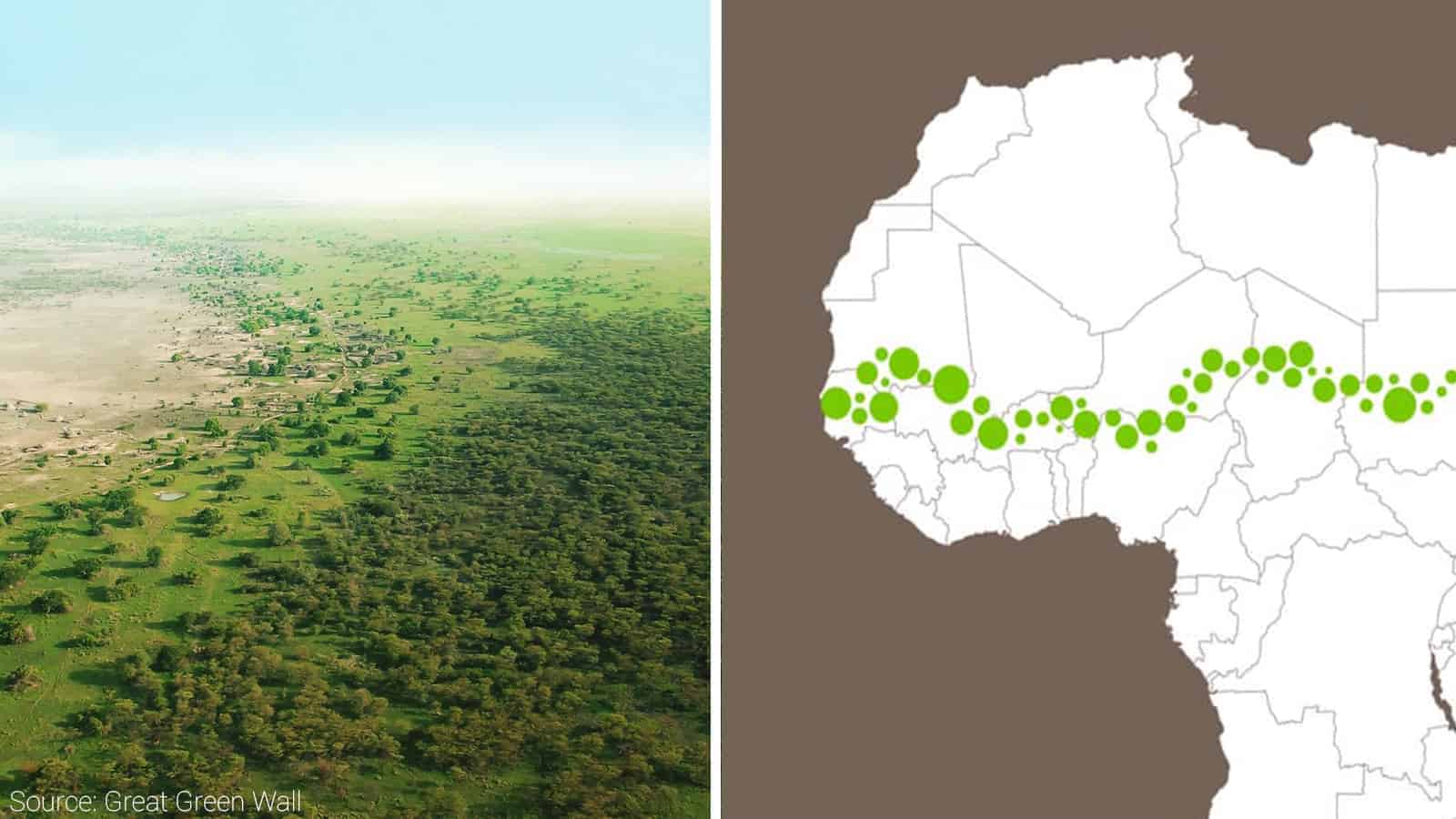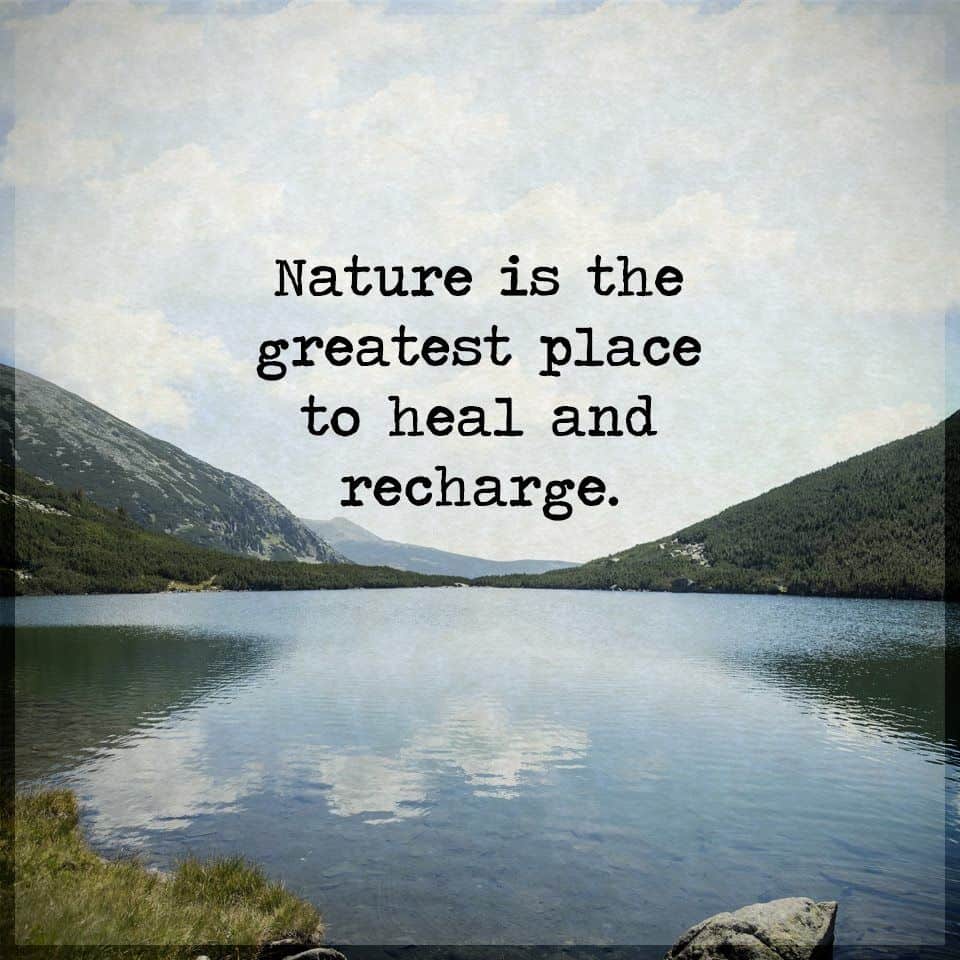The Great Green Wall in Africa will span 8,000km across the continent, creating jobs and providing food security for millions. Since the initiative came to life in 2007, workers have completed around 15% of the wall. The natural wonder restores the rapidly degrading landscapes in Africa, creating a better environment for everyone along its path.
The wall provides a solution to many urgent problems facing the world – namely, climate change, drought, famine, and migration. After the wall’s completion, it will measure three times the size of the Great Barrier Reef. The wall will then become the world’s largest living structure.
About the Great Green Wall Project in Africa
The Great Green Wall began in Africa’s Sahel region, at the southern edge of the Sahara desert. Millions of people here live in poverty and face devastating impacts of climate change. Due to global warming, the area experiences frequent droughts, food insecurity, conflicts over scarce resources, and mass migration to Europe. However, because of the wall, communities here have a reason to stay.
Now, abundant life springs forth from creating the wall, improving people’s well-being and stability. With the wall comes jobs, food security, and a better quality of life for millions. The creators of the wall say that the impacts are far-reaching. It goes beyond just the Sahel region’s people – it symbolizes that humanity can heal the Earth together.While climate change impacts us all, we can choose to work with nature to lessen the consequences. If nature can grow back in such arid places like the Sahel, it shows we can overcome adversity everywhere. The wall is a beacon of hope for humanity, a reminder of how we need nature to survive.
The wall will support life for generations to come, helping communities not just survive, but thrive. Last month, the wall initiative received millions of dollars to aid in its completion.
Funding for The Great Green Wall in Africa will help meet sustainability goals.
The Great Green Wall for the Sahel and Sahara Initiative (GGW) recently received at least $14.326 billion US dollars in additional funding. French President Emmanuel Macron announced the news after the virtual ‘One Plant Summit for Biodiversity’ held in Paris on January 11. The Great Green Wall Accelerator provides 30 percent of the $33 billion needed to complete the wall by 2030. Top financiers include the French Government, the World Bank, and the African Development Bank.
“The mobilization of this additional funding will contribute to the achievement of the Great Green Wall goals,” said Mohamed Cheikh El-Ghazouani, President of Mauritania and the Chair of Conference of Heads of State and Government of the Pan African Agency for the Green Great Wall.
The Great Green Wall makes an important contribution to the UN Sustainable Development Goals (known as the SDGs). These 17 goals created by world governments aim to eradicate poverty and inequity, creating well-being for all.
The complete list of sustainable development goals by the UN include:
- No poverty
- Zero hunger
- Good health and well-being
- Quality education
- Gender equality
- Clean water and sanitation
- Affordable and clean energy
- Decent work and economic growth
- Industry, innovation, and infrastructure
- Reduced inequalities
- Sustainable cities and communities
- Responsible consumption and production
- Climate action
- Life below water
- Life on land
- Peace, justice, and strong institutions
- Partnerships for the goals
The Great Green Wall will contribute to an astonishing 15 of these 17 goals. By 2030, the wall aims to restore 100 million hectares of desolate land and create 10 million green jobs. The founders of the wall also aspire to capture at least 250 million tonnes of carbon from the atmosphere. To reach their goal of restoring 100 million hectares, they will have to repurpose 10 million hectares each year.
If you’d like to give power and a voice to this movement, you can share the page on social media. Also, you can sign a pledge which will help them lobby governments or donate directly here.
The natural wonder in Africa has come a long way.
The initiative began in 2007, originally involving 11 African countries. The wall provides an eco-barrier along the southern Sahara Desert from the Atlantic coast to the Red Sea. In the 1970s, the region once teemed with life and greenery. However, population growth, poor land management, and climate change transformed the oasis into a barren landscape.
Fast forward to 2019, and nine more countries decided to join in the movement to save Africa. Volunteers planted drought-resistant acacia trees across the width of the continent. A couple of years ago, the wall had only reached 15% completion but had made lasting impacts on participating countries. Over 12 million acres of barren land had been restored in Nigeria; 30 million acacia trees had been planted in Senegal. An astounding 37 million acres of land had been restored in Ethiopia as well, a remarkable achievement.
“The Great Green Wall is an inspiring example of ecosystem restoration in action,” said Susan Gardner, Director of UN Environment Program’s Ecosystems Division. “It is rapidly becoming a green growth corridor that is bringing investment, boosting food security, creating jobs, and sowing the seeds of peace.”
While the pandemic has created financial challenges for Africa, the ‘wall accelerator’ will keep the project on course.
Ghazouani said that it would,
“Enable our countries, in accessing the necessary funds, to increase local investments within the framework of the five pillars adopted and to strengthen the capacities of the national agencies of the Great Green Wall.”
“Pandemic recovery is our chance to change course. With smart policies and the right investments, we can chart a path that brings health to all, revives economies, and builds resilience. Innovations in energy and transport can steer a sustainable recovery and an economic and social transformation. Nature-based solutions – such as Africa’s Great Green Wall – are up-and-coming,” said António Guterres, UN Secretary General.
Final thoughts: The Great Green Wall in Africa will ensure the well-being of millions
This ambitious project in Africa shows the world what can happen when we work with nature instead of against it. With the completion of the wall, it will contribute toward many of the UN sustainability goals. The wall will also provide jobs, natural wonder in Africa, and improved life for communities along its path. Hopefully, the massive movement will inspire other similar projects around the world.


















